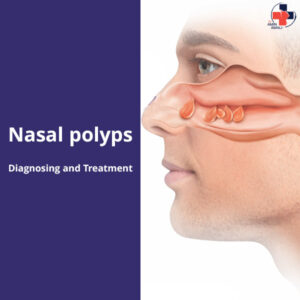In a world where appearances matter and self-confidence plays a significant role, it comes as no surprise that individuals are increasingly seeking ways to maintain their youthful looks and reverse the signs of aging. Cosmetic surgery has emerged as a powerful tool in the quest for rejuvenation, with facelift procedures standing out as one of the most popular options. This article dives deep into the realm of face lift cosmetic surgery, exploring its benefits, techniques, recovery process, and associated considerations.

Understanding Facelift Surgery
Face-lift surgery, technically known as rhytidectomy, aims to enhance the appearance of the face and neck by reducing visible signs of aging. It involves the removal of excess skin and tightening of underlying tissues to create a smoother, firmer, and more youthful facial contour. While primarily addressing wrinkles, loose skin, and sagging jowls, face lifts can also target other concerns such as deep creases, facial volume loss, and defined jawlines.
The Benefits of a Facelift
Enhanced Youthfulness: Face lift surgery can turn back the clock and restore a more youthful appearance. By tightening the skin and muscles, it minimizes wrinkles, fine lines, and other signs of aging, resulting in a rejuvenated facial aesthetic.
Boosted Self-Confidence: Feeling good about one’s appearance can have a significant impact on self-confidence. A successful face lift can help individuals regain their self-assurance and improve their overall quality of life.
Long-Lasting Results: While face lift surgery isn’t a permanent solution to aging, its results tend to be long-lasting compared to non-surgical alternatives. Patients can enjoy the benefits of their rejuvenated appearance for a significant period, typically ranging from 5 to 15 years.
How to get ready for face lift surgery ?
Getting ready for face lift surgery involves a series of steps to ensure a safe and successful procedure. Here are some general guidelines to consider:
Consultation with a Qualified Surgeon:
Schedule a consultation with a qualified plastic surgeon who specializes in face lift procedures. Discuss your goals, medical history, and any concerns you may have.
Medical Evaluation:
Your surgeon will likely conduct a comprehensive medical evaluation to assess your overall health and determine if you’re a suitable candidate for surgery. Be prepared to share details about your medical history, current medications, and any pre-existing conditions.
Discuss Expectations:
During your consultation, have a thorough discussion with your surgeon about what you can expect from the procedure, including potential risks and complications. Make sure you have a clear understanding of the expected outcomes and recovery process.
Follow Pre-surgery Instructions:
Your surgeon will provide pre-surgery instructions that you should carefully follow. This may include avoiding certain medications, such as aspirin or blood thinners, quitting smoking, and adjusting any regular medications.
Arrange Transportation and Support:
You’ll need to arrange transportation to and from the surgical facility on the day of your procedure. Additionally, having someone stay with you for the initial days of recovery can be beneficial.
Preparing Your Home:
Prior to your surgery, make some preparations at home to ensure a comfortable recovery. Set up a recovery area with necessary items like extra pillows, loose clothing, ice packs, and prescribed medications. Ensure that your home is clean and organized to minimize any potential risks.
Plan for Recovery Time:
Face lift surgery typically requires a certain amount of downtime for proper healing. Plan to take time off work and other responsibilities to allow yourself adequate rest and recovery.
Stock Up on Supplies:
It’s a good idea to stock up on supplies you may need during your recovery, such as soft foods, facial cleansing products recommended by your surgeon, and any prescribed post-operative care products.
Remember, these are general guidelines, and your surgeon will provide specific instructions based on your individual circumstances. Always consult with your surgeon for personalized advice on preparing for your face lift surgery.
Facelift techniques
1 – Traditional Face Lift : The traditional or “full” face lift involves incisions made along the hairline, extending around the ear, and sometimes reaching the lower scalp. This approach allows the surgeon to access the underlying tissues, remove excess skin, and tighten muscles.The traditional face lift is ideal for addressing the entire face and neck area.
2 – Mini Face Lift : The mini face lift, also known as a “short scar” or “weekend lift,” is a less invasive variation of the traditional face lift. It involves shorter incisions, usually limited to the ear area. This technique primarily focuses on lifting and tightening the middle and lower regions of the face, making it suitable for individuals with moderate signs of aging and minimal excess skin.
Recovery and Aftercare
Post-surgical recovery plays a crucial role in achieving optimal results after a face lift. Here are some key aspects to consider :
Rest and Healing: Adequate rest and following the surgeon’s aftercare instructions are vital for a smooth recovery. Patients should avoid strenuous activities, excessive facial expressions, and sun exposure to aid the healing process.
Swelling and Bruising: Swelling and bruising are normal after a face lift and typically subside within a few weeks. The surgeon may recommend cold compresses or specific medications to alleviate discomfort.
Patience and Longevity: While initial results are visible soon after the surgery, patients should remember that full recovery and optimal results may take several months. Over time, residual swelling subsides, and the face settles into its final, rejuvenated appearance.
Considerations and Risks
Realistic Expectations: It’s essential for individuals considering face lift surgery to have realistic expectations and a clear understanding of the procedure. Consultations with skilled and experienced plastic surgeons can help set realistic goals and ensure patient satisfaction.
Potential Risks: Like any surgical procedure, face lifts carry certain risks, including bleeding, infection, scarring, and nerve damage. However, when performed by a qualified professional in a reputable medical facility, the risks are minimized, making face lift surgery relatively safe.
Alternative Options: Face lift surgery may not be suitable for everyone. Non-surgical alternatives such as dermal fillers, Botox injections, and laser treatments can provide temporary rejuvenation with minimal downtime. Consulting with a plastic surgeon can help determine the most appropriate option based on individual needs and goals.
The decision to undergo a face lift cosmetic surgery is a personal choice that can profoundly impact one’s appearance, self-confidence, and overall well-being. By understanding the benefits, techniques, recovery process, and associated considerations, individuals can make informed decisions and embark on their journey towards a more youthful, refreshed version of themselves. Remember, a face lift can be a powerful tool in the pursuit of self-enhancement, but it’s equally important to embrace and celebrate natural beauty, both inside and out.












